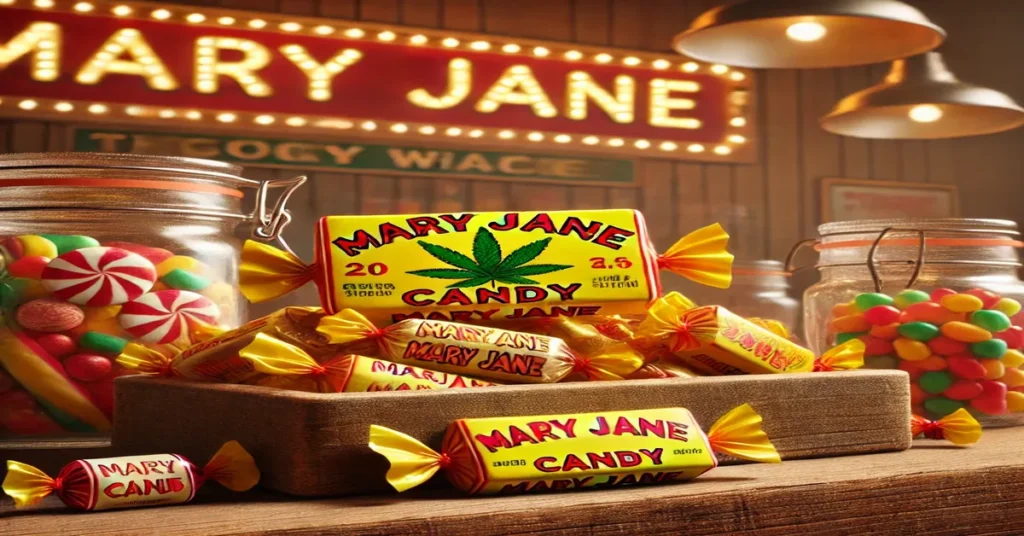Introduction
Mary Jane Candy holds a special place in the hearts of candy enthusiasts, conjuring memories of childhood, simpler times, and the unmistakable chewy texture of this timeless treat. Introduced over a century ago, Mary Janne Candy has become a symbol of American confectionery history, celebrated for its unique peanut butter and molasses flavor.
This article delves into the origins, production, cultural impact, and modern-day revival of Mary Janne Candy. Whether you’re a longtime fan or a curious newcomer, you’ll discover why this humble treat has endured as a beloved classic.
Origins and History
Birth of Mary Jane Candy
Mary Janne Candy was first created in 1914 by Charles N. Miller, a confectioner from Boston, Massachusetts. The candy was named after Miller’s favorite aunt, Mary Jane. Its distinctive combination of peanut butter and molasses quickly gained popularity, making it a staple in penny candy stores across America.
At the time, the United States was experiencing a boom in candy production. Advances in machinery and transportation allowed candies to reach wider audiences. Mary Janne Candy stood out due to its unique flavor profile and affordability, appealing to children and adults alike.
Evolution Through the Decades
Over the years, Mary Janne Candy was produced by various companies. The Charles N. Miller Company eventually sold its assets to Stark Candy Company, which continued producing Mary Janes until Necco (New England Confectionery Company) acquired the brand. Necco’s stewardship kept the candy in production for decades, cementing its place as a nostalgic favorite.
When Necco filed for bankruptcy in 2018, Mary Jaane Candy faced an uncertain future. However, it was later revived by the Atkinson Candy Company, ensuring its legacy would continue for new generations to enjoy.
What Makes Mary Jane Candy Unique?
Flavor Profile
Mary Jaane Candy’s signature flavor combines rich molasses and creamy peanut butter. The result is a distinctive taste that’s both sweet and savory. The molasses provides a deep, caramel-like sweetness, while the peanut butter adds a nutty richness, creating a perfectly balanced flavor profile.
Texture
One of the hallmarks of Mary Jaane Candy is its chewy texture. Unlike hard candies or brittle toffees, Mary Janes offer a satisfying chew that gradually releases their flavor. This texture has been a key factor in their appeal, offering a tactile experience that’s as enjoyable as the taste.
Iconic Branding
The original Mary Jane wrapper featured a simple yet memorable design, with a yellow background, red borders, and an illustration of a young girl—presumably the namesake Mary Jane. This vintage aesthetic has become synonymous with old-fashioned candy, evoking feelings of nostalgia for many consumers.
Production Process
Ingredients
Mary Jaane Candy is made with a few simple ingredients:
- Molasses: Provides the candy’s distinctive sweetness and dark color.
- Peanut Butter: Adds richness and a creamy undertone.
- Corn Syrup: Acts as a sweetener and helps achieve the chewy texture.
- Sugar: Balances the molasses and peanut butter flavors.
- Stabilizers and Flavorings: Ensure consistency and enhance taste.
Manufacturing Steps
- Mixing: The ingredients are blended together in large vats to form a homogeneous mixture.
- Cooking: The mixture is heated to the desired temperature to achieve the right consistency and flavor.
- Shaping: The cooked candy is rolled and cut into individual pieces.
- Wrapping: Each piece is individually wrapped in the iconic yellow and red wax paper.
- Packaging: The wrapped candies are packed into bags or boxes, ready for distribution.
Modern production methods have streamlined these steps, ensuring efficiency while maintaining the candy’s traditional qualities.
Cultural Impact and Popularity
A Candy Store Staple
During its heyday, Mary Janne Candy was a fixture in penny candy stores across America. It was affordable, flavorful, and satisfying, making it a favorite among children with limited pocket money. For many, Mary Janes were a special treat to be savored, traded, or shared.
Nostalgia Factor
Mary Jaane Candy’s enduring popularity is largely due to its nostalgic appeal. For generations who grew up enjoying these treats, the candy represents a connection to their childhood. Its old-fashioned packaging and traditional flavor evoke memories of simpler times, creating an emotional bond with consumers.
Revival and Resurgence
The candy’s revival by the Atkinson Candy Company has brought it back into the spotlight. Atkinson’s commitment to preserving the original recipe and quality has ensured that Mary Jane Candy remains true to its roots while appealing to modern audiences. The renewed interest in retro candies has further boosted its popularity, making it a sought-after item among collectors and candy enthusiasts.
Modern-Day Availability
Where to Buy
Mary Jaane Candy is available in various retail settings, including:
- Specialty candy stores
- Online retailers
- Supermarkets and convenience stores (select locations)
Variants and Packaging
While the classic Mary Jane remains the most popular version, some manufacturers have introduced new packaging options to cater to modern preferences. These include bulk packs, single-serve bags, and mixed assortments featuring other retro candies.
Popularity Among Different Generations
Interestingly, Mary Jaane Candy appeals to both older generations who remember it from their youth and younger generations discovering it for the first time. This cross-generational appeal highlights the candy’s timeless nature and universal charm.
DIY Mary Jane Candy Recipes
For those who enjoy making candy at home, recreating Mary Jane Candy can be a fun and rewarding experience. Below is a simple recipe to try:
Ingredients
- 1 cup molasses
- ½ cup peanut butter
- 1 cup sugar
- ½ cup corn syrup
- 1 tsp vanilla extract
Instructions
- Combine molasses, sugar, and corn syrup in a saucepan. Heat over medium heat, stirring constantly until the mixture reaches 245°F (soft-ball stage).
- Remove from heat and stir in peanut butter and vanilla extract until smooth.
- Pour the mixture onto a greased baking sheet and allow it to cool slightly.
- Once firm but pliable, cut into small pieces and wrap each piece in wax paper.
This homemade version captures the essence of Mary Jane Candy while allowing for customization of flavors and textures.
Fun Facts
- Centennial Candy: Mary Jane Candy celebrated its 100th anniversary in 2014, a testament to its enduring popularity.
- Original Price: When first introduced, Mary Jane candies were sold for just a penny each.
- Pop Culture Appearances: The candy has been featured in various films and TV shows, symbolizing nostalgia and Americana.
- Collector’s Item: Vintage Mary Jane wrappers and memorabilia are highly sought after by collectors.
- Regional Popularity: While popular nationwide, Mary Jane Candy has a particularly strong following in New England, where it originated.
Conclusion
Mary Jane Candy is more than just a sweet treat—it’s a piece of American history. From its humble beginnings in a Boston candy shop to its resurgence in modern times, Mary Jane Candy has captivated generations with its distinctive flavor, chewy texture, and nostalgic charm. Whether you’re rediscovering it or trying it for the first time, this classic candy is sure to leave a lasting impression.
FAQs
1. What does Mary Jane Candy taste like? Mary Jane Candy has a unique flavor that combines the sweetness of molasses with the nuttiness of peanut butter, creating a rich and balanced taste.
2. Is Mary Jane Candy gluten-free? Yes, Mary Jane Candy is typically gluten-free. However, it’s always a good idea to check the packaging for specific allergen information.
3. Who makes Mary Jane Candy today? The Atkinson Candy Company currently produces Mary Jane Candy, ensuring the original recipe and quality are maintained.
4. Can I make Mary Jane Candy at home? Yes, you can recreate Mary Jane Candy using simple ingredients like molasses, peanut butter, sugar, and corn syrup. Homemade recipes allow for customization of flavor and texture.
5. Where can I buy Mary Jane Candy? Mary Janne Candy is available in specialty candy stores, online retailers, and select supermarkets and convenience stores.
6. Why is Mary Jane Candy considered nostalgic? Mary Jane Candy is considered nostalgic due to its long history, traditional flavor, and association with childhood memories and old-fashioned candy stores.







